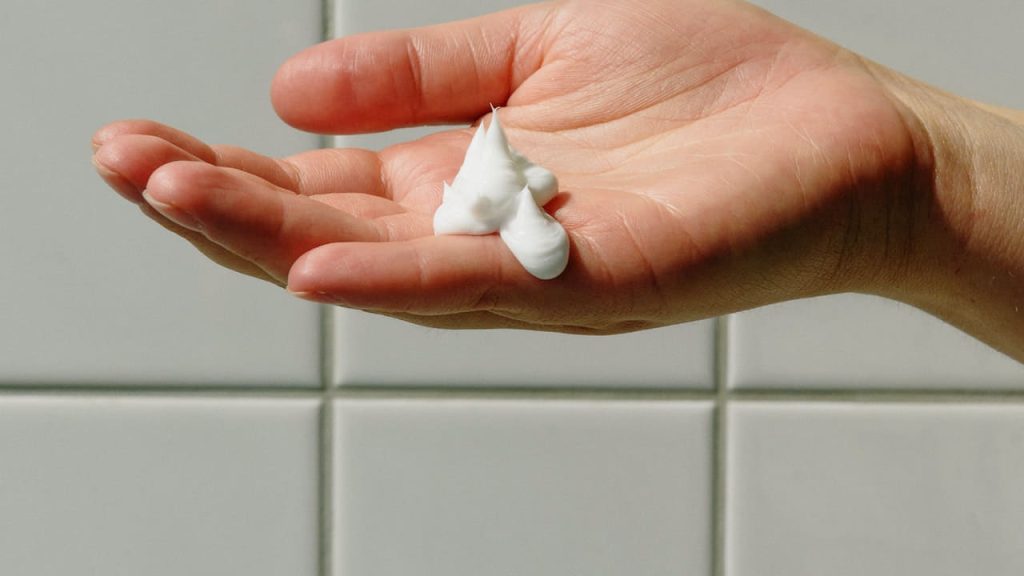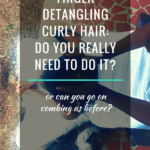10 Hair Care Tips for Curly Hair
10 Hair Care Tips for Curly Hair
Are you ready to unlock the full potential of your gorgeous curls? At hairy.cartlab.web.id, we understand the unique challenges and rewards of managing curly hair. Whether you have loose waves or tight coils, embracing your natural texture requires a dedicated approach. This comprehensive guide will equip you with the knowledge and techniques to achieve healthy, vibrant, and defined curls. We'll explore the essential steps for a successful curly hair care routine, helping you navigate the world of products and techniques to find what works best for your specific hair type and needs. From understanding your curl pattern to mastering the art of styling, we'll cover it all.
Curly hair is often drier and more prone to breakage than straight hair due to its unique structure. The curl pattern itself prevents the natural oils produced by the scalp from easily traveling down the hair shaft, leading to dryness and frizz. Understanding this inherent characteristic is the first step towards crafting a successful hair care regimen. This guide will delve into the specific needs of curly hair, providing you with practical advice and actionable steps to transform your hair care routine.
This article will provide you with 10 Hair Care Tips for Curly Hair, covering everything from washing and conditioning to styling and protecting your curls. We'll also discuss the importance of choosing the right products and avoiding common mistakes that can damage your curls. By following these tips, you'll be well on your way to achieving healthy, bouncy, and beautiful curls.

1. Understanding Your Curl Type and Porosity

Before diving into specific products and techniques, it's crucial to understand your curl type and porosity. Curl type refers to the shape and size of your curls, typically categorized into types 2 (wavy), 3 (curly), and 4 (coily), each with further subtypes (e.g., 3a, 3b, 3c). Porosity describes your hair's ability to absorb and retain moisture. High porosity hair absorbs moisture quickly but also loses it just as fast, while low porosity hair struggles to absorb moisture. Knowing your curl type and porosity will help you choose the right products and techniques to maximize hydration and minimize frizz. This understanding forms the foundation of a personalized curly hair care routine. For instance, high porosity hair might benefit from protein treatments to strengthen the hair shaft, while low porosity hair might require more gentle cleansing and the use of lighter products.
2. The Power of the Right Shampoo and Conditioner

Choosing the right shampoo and conditioner is paramount for healthy curly hair. Opt for sulfate-free, moisturizing shampoos and conditioners specifically designed for curly hair. Sulfates are harsh detergents that can strip your hair of its natural oils, leading to dryness and frizz. Look for ingredients like shea butter, coconut oil, and argan oil, which provide intense hydration and nourishment. Consider a co-wash (conditioner-only wash) for a gentler cleansing experience, especially if your hair is particularly dry or fragile. Remember to apply conditioner generously, focusing on the ends, and leave it in for a few minutes to allow it to penetrate the hair shaft. For those seeking a simpler approach to hair care, check out our article on "10 Simple Steps for a Healthy Hair Routine" for additional tips.
3. Embrace the "Squish to Condish" Method

The "squish to condish" method is a popular technique among curly hair enthusiasts for maximizing hydration and reducing frizz. After applying conditioner, gently cup your hair in your hands and "squish" the conditioner into your curls. This technique helps distribute the product evenly and encourages curl definition. This gentle manipulation, unlike harsh rubbing, minimizes friction and breakage, leading to smoother, more defined curls. It’s a simple yet effective way to enhance the benefits of your conditioner and promote healthy, well-defined curls. This method is particularly beneficial for those with thicker, coarser curl types.
4. Deep Conditioning Treatments: A Must-Have

Deep conditioning treatments are essential for maintaining the health and moisture balance of curly hair. These treatments provide intense hydration and nourishment, repairing damage and preventing breakage. Apply a deep conditioner once a week or as needed, leaving it on for at least 30 minutes, or even overnight for optimal results. You can use a store-bought deep conditioner or create your own using natural ingredients like avocado, olive oil, or honey. A good deep conditioner will help to replenish moisture lost due to washing and styling, leaving your curls soft, supple, and less prone to damage.
5. Detangling with Care: The Right Tools and Techniques

Detangling curly hair requires a gentle approach to minimize breakage. Always detangle your hair while it's wet and saturated with conditioner. Use a wide-tooth comb or your fingers to gently work through any knots, starting from the ends and working your way up to the roots. Avoid pulling or tugging on your hair, as this can lead to damage. Consider using a leave-in conditioner or detangling spray to further lubricate your hair and make the process easier. Remember, patience is key when detangling curly hair. Rushing the process can lead to breakage and frustration.
6. Protective Styling: Minimizing Manipulation
/filters:quality(70)/thumbs/j8/vz/yzh85lpb5b6b7a1526975328083861_1080x1080.jpg?width=100&height=100)
Protective styling is a crucial aspect of maintaining healthy curly hair. Protective styles, such as braids, twists, or updos, minimize daily manipulation, reducing the risk of breakage and frizz. These styles keep your hair tucked away, protecting it from environmental factors and reducing the need for frequent styling. Choose styles that are comfortable and easy to manage, and remember to keep your scalp clean and moisturized to prevent build-up and irritation. Protective styling allows your hair to rest and retain moisture, promoting healthier growth and minimizing damage.
7. The Importance of a Satin or Silk Pillowcase

Sleeping on a satin or silk pillowcase is a simple yet effective way to protect your curls overnight. Cotton pillowcases can absorb moisture from your hair and create friction, leading to frizz and breakage. Satin and silk, on the other hand, are smooth and less absorbent, minimizing friction and preserving your curl definition. This simple change can significantly improve the overall health and appearance of your curls. For short hair, you might also be interested in our article on "Tips to Style Short Hair for Volume".
8. Air Drying vs. Diffusing: Choosing the Right Method

When it comes to drying curly hair, you have two main options: air drying or diffusing. Air drying allows your curls to form naturally, resulting in a softer, more natural look. However, air drying can take a considerable amount of time. Diffusing, on the other hand, uses a hairdryer with a diffuser attachment to gently dry your hair while defining your curls. Diffusing is a faster method that can help to reduce frizz and enhance volume. The best method depends on your personal preference and the amount of time you have available.
9. Product Application Techniques: Less is More

Applying styling products correctly is crucial for achieving defined and frizz-free curls. Start with a small amount of product and add more as needed. Use the "praying hands" method to distribute the product evenly throughout your hair, gently scrunching your curls upwards. Avoid over-applying products, as this can lead to build-up and weigh down your curls. Experiment with different products and techniques to find what works best for your hair type and desired style. Remember, proper application is key to unlocking the full potential of your styling products.
10. Regular Trims to Maintain Healthy Ends

Regular trims are essential for maintaining healthy curly hair. Split ends can travel up the hair shaft, causing further breakage and damage. Getting your hair trimmed every 6-8 weeks will help to remove split ends and prevent further damage. This helps to maintain the overall health and appearance of your curls, preventing further breakage and promoting healthier growth. A professional stylist familiar with curly hair can help you achieve the best results. For parents of curly-haired children, we recommend reading our guide on "Natural Curly Hair Ideas for Kids: A Complete Guide".
Conclusion
Mastering the art of curly hair care takes time and patience, but the results are well worth the effort. By following these 10 Hair Care Tips for Curly Hair, you can achieve healthy, vibrant, and defined curls that you'll love. Remember to be patient with yourself, experiment with different products and techniques, and most importantly, embrace your natural texture. For more in-depth information and a comprehensive guide to curly hair care, visit 10 Hair Care Tips for Curly Hair. Happy curling!

Komentar
Posting Komentar